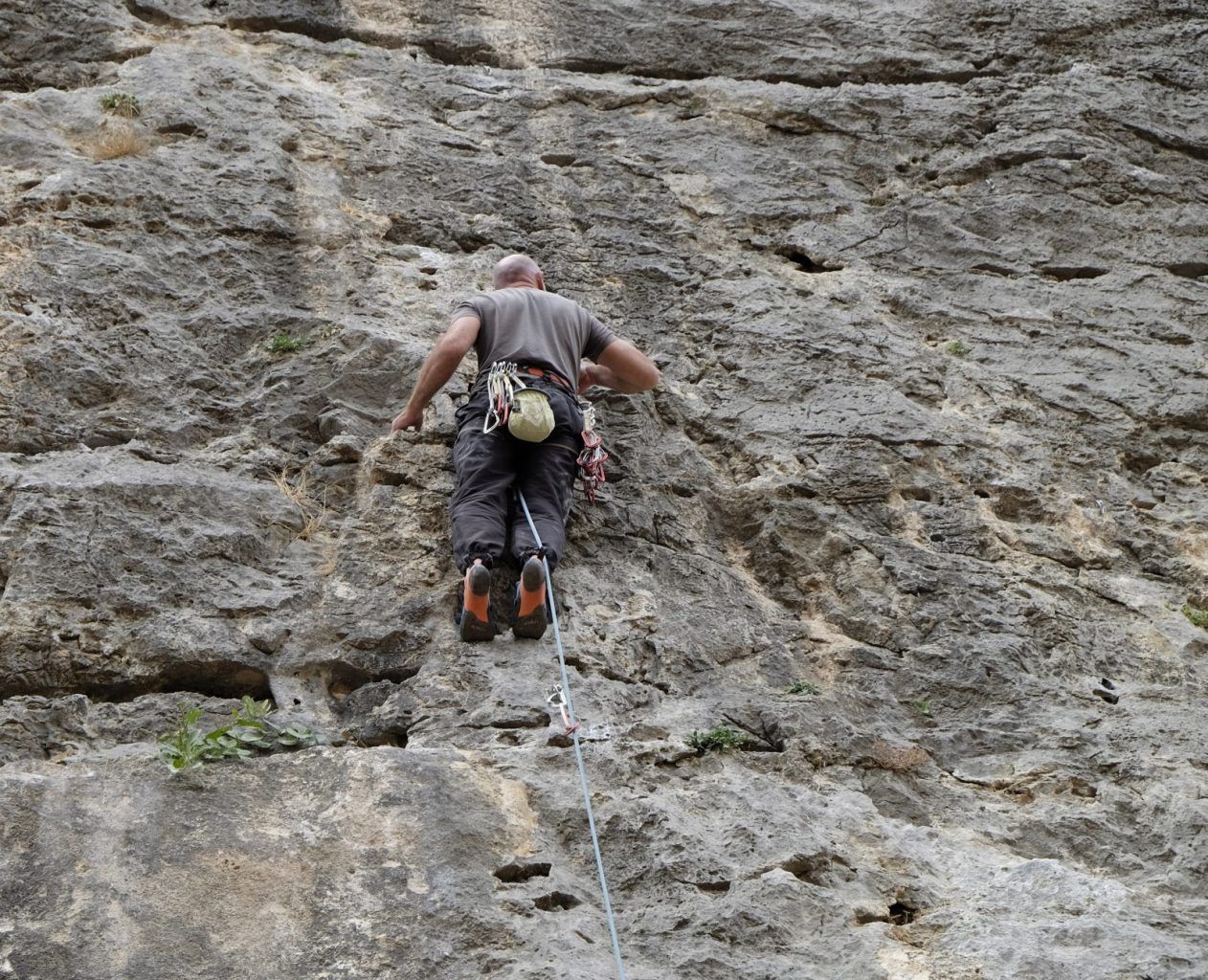A closer look at Rope Awareness

Is it possible to always avoid getting the rope behind your leg? Maybe not 100% of the time but it is important to give a clear procedure to help people avoid it.
Teaching people how to avoid getting the rope behind their legs at first seems a fairly straightforward thing to teach. However, there is a little more to it than advising climbers to keep the rope between their legs and the rock (rock-rope-leg).
When teaching lead climbing we will often choose routes that are well protected and therefore present less opportunity for the climber to make the mistake of getting the rope behind the leg. As there is quite a bit of new information for new leaders to think about, placing lots of gear when trad leading, or placing trad gear in between bolts when sport climbing, can provide a useful way of deferring teaching rope awareness until later in a course when the information might be more easily retained. It is still possible to fall with the with the rope behind the leg when clipped into gear above the waist, but this is more likely to result in a rope burn rather than falling upside down.

As the consequences of falling upside down can be serious it is something that deserves a reasonable amount of attention.
Most people find the concept of rock-rope-leg fairly straightforward. The difficulty comes when the choice of foothold necessitates making a decision to go around the outside of the rope keeping it between the cliff and your leg or to control the rope with the foot or the leg. I’m going to look in more detail at why we sometimes feel we have made the correct decision but still find the rope travelling behind our leg.
So, is there a rule or procedure that we can apply or teach to help students with these decisions? Yes there is. And most of us have one, and that is: when moving around the rope always go around the outside of the rope. This makes perfect sense as logically if you step inside the rope it would usually end up behind the leg. This is however only part of the procedure. There does need to be a second part to this rule which is: only step over the rope if you are also going past the gear or the bolt below you.

If the chosen foothold is directly above or not beyond the gear or bolt below, then the correct decision would be to control the rope with the side of your foot or leg. Failure to do this will almost always result in the rope travelling behind the leg once you have moved your body to stand on that foothold. It is moving your body that takes the rope behind your leg. And that is part of the problems. It seems ok to go around the outside of the rope when you place your foot on the hold, but as soon as you move your body, the rope travels with it and ends up behind your leg.

rope with the side of her foot. Second and third photo show how the climber has
chosen a foothold that is clearly beyond (to the right of) the bolt below, but made
the wrong decision to step inside the rope, resulting in having the rope behind the
leg while clipping the next bolt.
Not taking into account the angle of the rope travelling up from the last piece of gear, and/or the foothold in relation to the protection will lead to the rope travelling behind the leg often. A good percentage of clients attending coaching courses is related to having psychological issues that stem from having fallen upside down. Which may have been avoided had they received a more detailed explanation of how to avoid getting the rope behind their leg.
To summarise, in teaching rope awareness we should not just explain the rock-rope-legs principle and teach clients to always go around the outside of the rope. What we need to create in lead climbers is an awareness of the gear or bolt below. If the chosen foothold is past the gear or bolt below: go around the outside of the rope. If the chosen foothold is close to, just above, or not past the gear or bolt below: it is best to push the rope aside with the side of the foot.
For a visual and more detailed description, we refer to this video: “How to Avoid falling upside down – Rope Awareness – Rock and Sun”
How to avoid falling upside down – Rope Awareness
written by Trevor Massiah – Published in Professional Mountaineer Winter 2019